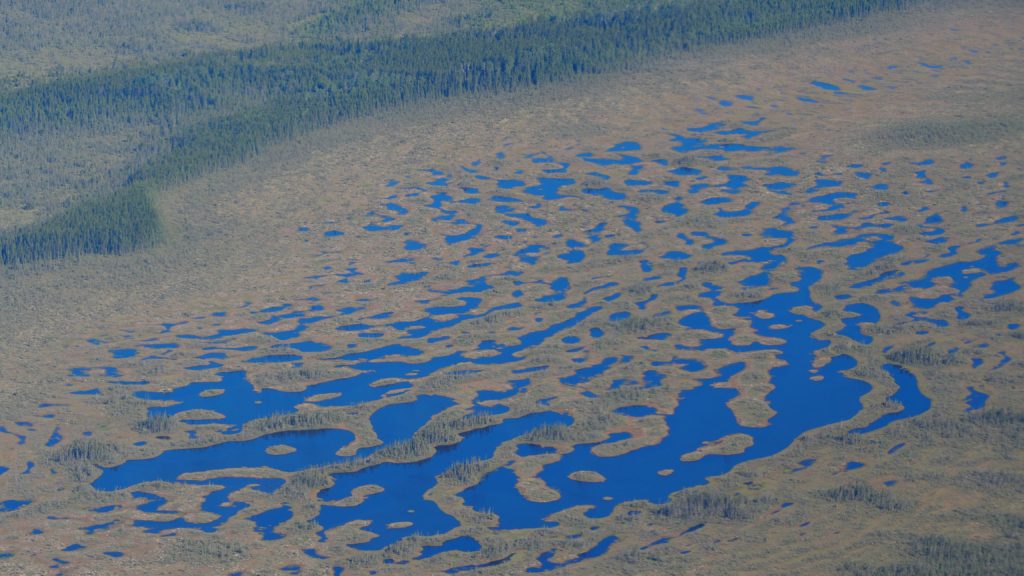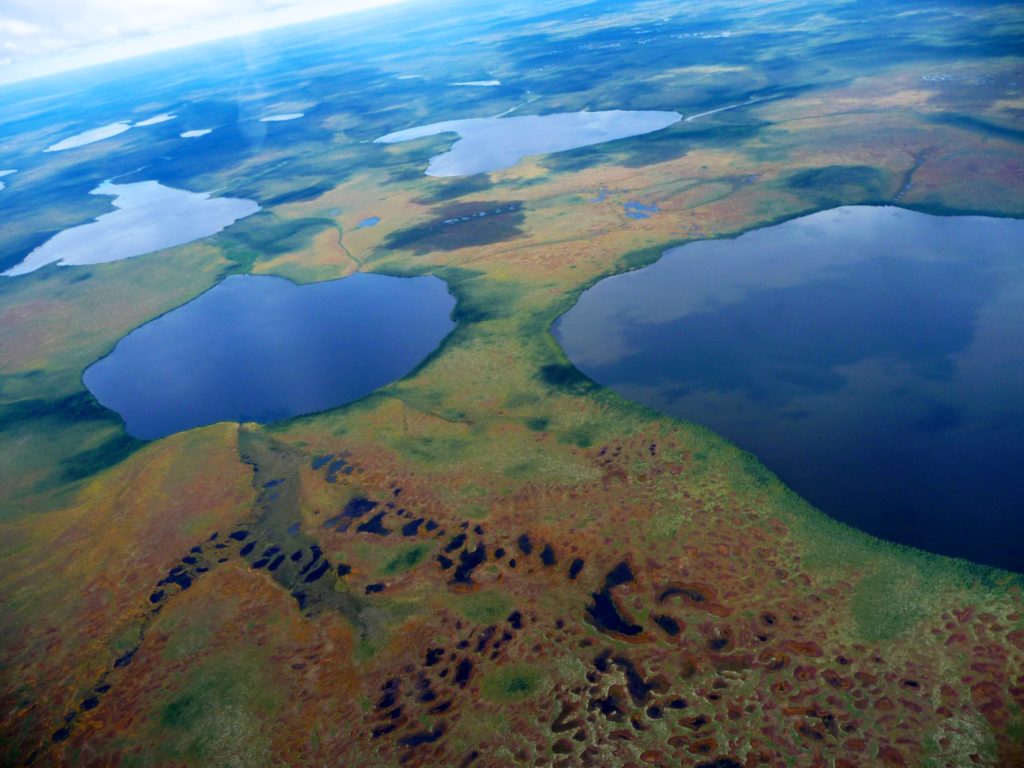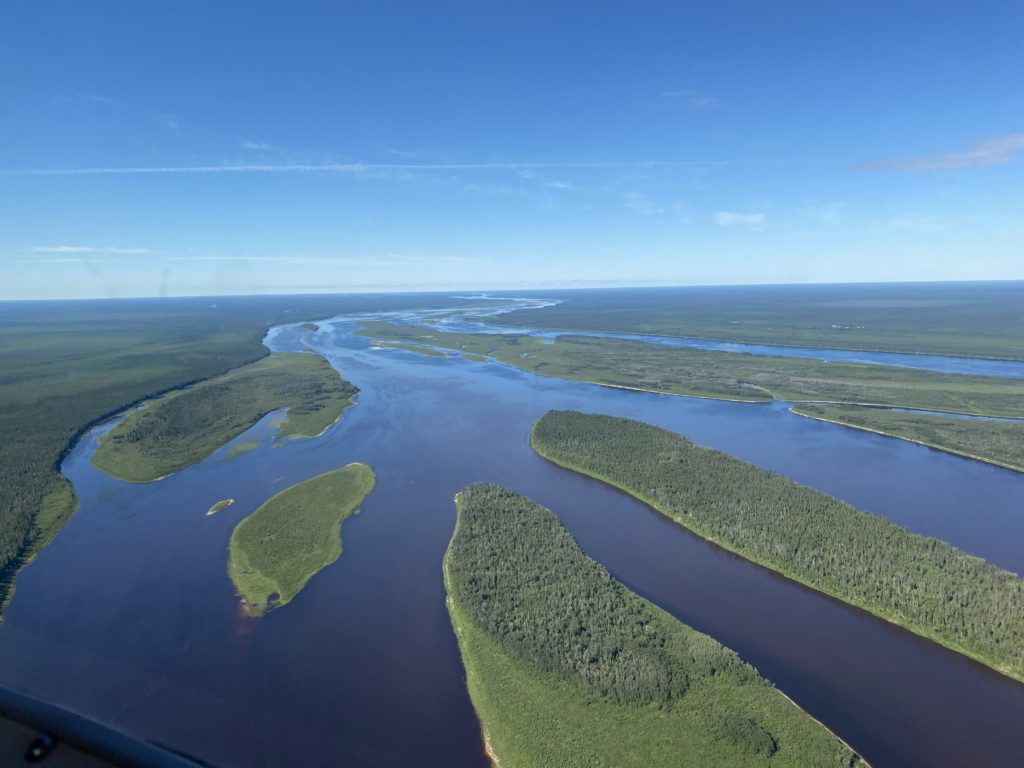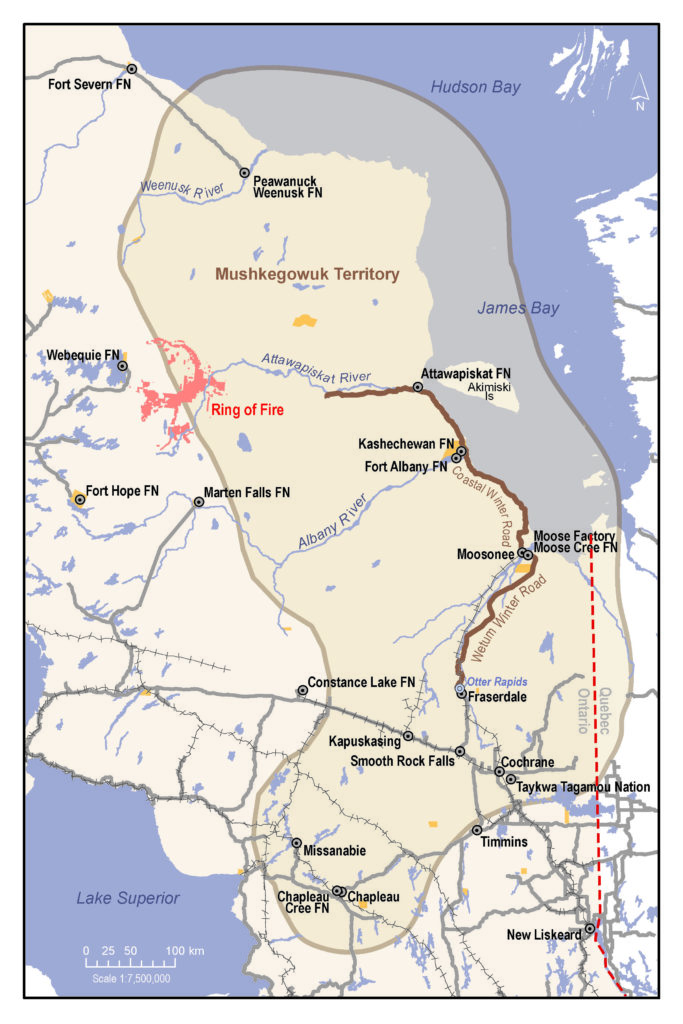Spotlight on the Hudson and James Bay Lowlands
“The Hudson and James Bay Lowlands are covered by peatlands which are an incredibly dense and globally significant carbon storage area. These carbon-rich areas are known as the ‘breathing lands’ to our Elders, and hold significant cultural value for the communities in the region.” — Vern Cheechoo, Mushkgeowuk Council’s Director of Lands & Resources

With the nature crises continuing to worsen, WWF-Canada’s Beyond Targets report compiled and analyzed data to support maximizing both biodiversity and climate benefits in decisions about protected areas establishment.
As a first principle, our report emphasizes that this type of analysis is only useful for decision-making if also consistent with the priorities, rights and governance of Indigenous Peoples. It also spotlights four Indigenous Protected and Conserved Areas (IPCAs) as examples for why Indigenous-led conservation should be prioritized for protected area establishment, regardless of our spatial analysis results regarding estimated contributions as habitats for species at risk, carbon storage, climate resiliency and ecological connectivity.
WWF-Canada is now going beyond the initial focus of Beyond Targets with regional highlights of locations where conservation values are particularly high, beginning with the globally significant yet largely unprotected Hudson and James Bay Lowlands (HJBL) which includes nearly 5 million hectares of unique habitats unrepresented in Canada’s protected areas network.

Hudson and James Bay Lowlands
Sweeping across northern Ontario and stretching into Manitoba and Quebec, the HJBL is home to many Indigenous communities, including seven Mushkegowuk First Nations, as well as lands and waters of extreme importance for national and global biodiversity and climate goals. Much of this rich ecology is due to Indigenous stewardship over thousands of years.
This puts the region rightly at the heart of discussions about large-scale protection for carbon-in-nature through globally significant peatlands, forests and coastal zones as well as for its concentrations of terrestrial and marine species.
Billions of tonnes of carbon
The world’s second-largest peatland complex — which stores billions of tonnes of irrecoverable ecosystem carbon accumulated over thousands of years — is threatened by growing industrial pressures. Activities such as mining and associated infrastructure (i.e. roads) would disrupt vital habitat and potentially release millions of tonnes of stored carbon into the atmosphere.

In response, the Mushkegowuk Council declared a moratorium on all development in the upstream Ring of Fire until a protection plan is put in place. A proper planning process is needed to evaluate potential risks from development, including downstream wetlands, rivers and coastal zone. Mushkegowuk Council is working with neighboring Matawa First Nations on a shared strategy to jointly ensure strong Indigenous involvement in a regional assessment process alongside the Impact Assessment Agency of Canada.
Millions of migratory birds
From palm warblers and loons to a host of other waterfowl and shorebirds, millions stopover in the HJBL for feeding during their annual migrations. Some of their crucial habitats are considered Key Biodiversity Areas — the most internationally recognized approach to identifying areas according to their science-based contribution to safeguarding global and Canadian biodiversity — but still lack official protection.
Currently, two such areas already fall within the proposed Mushkegowuk National Marine Conservation Area. They were designated KBAs because of their importance to birds as well as polar bears. Seven more areas in the region are being assessed to see if they meet the KBA criteria.
Among last of the world’s large intact ecosystems
A rare remaining large intact ecosystem, the Hudson James Bay Lowlands include large swaths of intact forest ecosystems that provide habitat for threatened boreal caribou as well as several large and free-flowing river systems which are unimpacted by dams and provide habitat for species like lake sturgeon.

Millions of hectares with little or no protection
The traditional territory of the Mushkegowuk Cree extends from subarctic permafrost in the north, also home to polar bears, all the way to boreal forest in the region’s south, where you’ll find species like wolverine, caribou and lynx. The middle swath of peatlands, a vast complex of wetlands and coastal areas, provide globally important bird habitat and carbon storage.
There are at least 2.6 million hectares of unique habitats in Mushkegowuk territory that have little or no representation within the existing protected areas network. And we identified eleven areas — totaling 1.46 million hectares —which received the highest conservation scores of our analysis in Ontario, placing them among the highest priority conservation areas in all of Canada.
Moose Cree First Nation, one of the seven Mushkegowuk communities, has worked since 2002 to formally protect more than 500,000 hectares in the North French River watershed as a designated protected area. This region includes some of the highest conservation values in the region that are not represented within the existing protected area network. Since 2019, Moose Cree First Nation has worked to establish an IPCA to protect these important places, but their calls for protection have not yet been recognized by the province of Ontario.
Indigenous-led conservation

To achieve effective conservation of ecosystem carbon and wildlife in Canada, including in globally significant places like the Hudson James Bay Lowlands, we need to recognize lessons and leadership from Indigenous Peoples who have successfully stewarded these lands in healthy and resilient ways. Indigenous-led conservation requires recognition and resolution of land rights alongside financial resources to enable sustainable conservation-based economies.
As described in the Beyond Targets report, protected area establishment in Canada cannot continue under a “business-as-usual” approach. The dual crises of biodiversity loss and climate change demand that new protected areas deal with both at the same time and our responsibility to advance reconciliation demands the prioritization of Indigenous rights and title.
This is why we need a new conservation model which:
- Prioritizes IPCAs and ensures that non-IPCAs are co-developed and implemented with Indigenous consent, recognition of territorial rights and title, and incorporation of Indigenous knowledge systems, leadership and stewardship.
- Creates new financial tools that account for the establishment, management and long-term stewardship of protected areas so they can provide prolonged benefits for biodiversity and climate in the centuries to come.
- Develops new legislative tools to advance IPCAs where current protected areas establishment tools are limited — as identified by the Indigenous Circle of Experts during the Pathway to Target 1 process.
- Guarantees crown governments recognize and support IPCAs when unilaterally declared by Indigenous Nations in acknowledgment of self-determination and self-governance.

